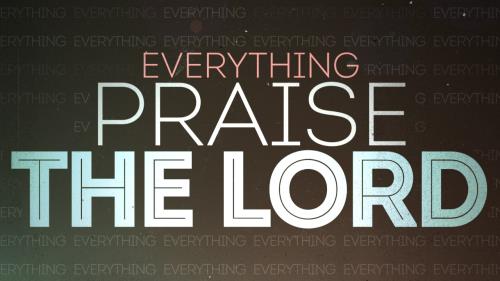-
The Place Of God's Presence: The Holy Of Holies Series
Contributed by Ron Tuit on Nov 9, 2016 (message contributor)
Summary: The Holy of Holies was the place where God's Presence dwelt in the Tabernacle. The symbolism of this Most Holy Place represented the character of God and the only way to approach Him.
“The Place of God’s Presence: The Holy of Holies”
Hebrews 9:1-14: Then indeed, even the first covenant had ordinances of divine service and the earthly sanctuary. 2 For a tabernacle was prepared: the first part, in which was the lampstand, the table, and the showbread, which is called the sanctuary; 3 and behind the second veil, the part of the tabernacle which is called the Holiest of All, 4 which had the golden censer and the ark of the covenant overlaid on all sides with gold, in which were the golden pot that had the manna, Aaron's rod that budded, and the tablets of the covenant; 5 and above it were the cherubim of glory overshadowing the mercy seat. Of these things we cannot now speak in detail. 6 Now when these things had been thus prepared, the priests always went into the first part of the tabernacle, performing the services. 7 But into the second part the high priest went alone once a year, not without blood, which he offered for himself and for the people's sins committed in ignorance; 8 the Holy Spirit indicating this, that the way into the Holiest of All was not yet made manifest while the first tabernacle was still standing. 9 It was symbolic for the present time in which both gifts and sacrifices are offered which cannot make him who performed the service perfect in regard to the conscience-- 10 concerned only with foods and drinks, various washings, and fleshly ordinances imposed until the time of reformation. 11 But Christ came as High Priest of the good things to come, with the greater and more perfect tabernacle not made with hands, that is, not of this creation. 12 Not with the blood of goats and calves, but with His own blood He entered the Most Holy Place once for all, having obtained eternal redemption. 13 For if the blood of bulls and goats and the ashes of a heifer, sprinkling the unclean, sanctifies for the purifying of the flesh, 14 how much more shall the blood of Christ, who through the eternal Spirit offered Himself without spot to God, cleanse your conscience from dead works to serve the living God?”
The Altar and the Veil
Last week we entered the Holy Place in the Tabernacle where the priests served daily in the presence of the Golden Candlesticks and the Table holding the bread of Presence, and we stopped in front of the Altar of Incense. The priests offered incense and prayers morning and evening on this Golden Altar of Incense as intercessors for the people of Israel. The Incense symbolizes the sweet aroma of continual prayer and praise being offered to God; Our prayers should also ascend to God as the aroma of sweet incense to our God. This altar stood directly against the veil or curtain which led into the Holy of Holies, also known as The Most Holy Place.
The altar of incense can also be seen as a picture of the intercession of Christ. Just as the altar of sacrifice in the courtyard was a type of Christ’s death on the cross on our behalf, the altar of incense in the Holy Place was a type of Christ’s mediation on our behalf—Christ’s work on earth and in heaven. The altar of incense was situated in the Holy Place just before the mercy-seat of the Ark on the other side of the veil—a picture of our Advocate’s standing in the presence of the Father (Hebrews 7:25; 9:24). The incense was to be burning continually on the altar of incense, which shows the perpetual nature of Christ as our Mediator and Intercessor. Christ’s intercession on our behalf is a sweet-smelling savor to God. What a magnificent picture for us today!
The thick curtain which separated the Holy of Holies from the Holy Place was known as the “veil” and was made of fine linen and blue, purple and scarlet yarn. There were figures of cherubim (angels) embroidered on this curtain and gold cherubim on top of the Ark inside the Holy of Holies. We know from Isaiah 6 that cherubim were angels with three pairs of wings who stood in the very presence of God, serving Him and guarding His throne. These embroidered cherubim were reminders that God’s almighty power, presence and Holy majesty was on the other side of the veil in the Most Holy Place, or Holy of Holies, overshadowing the mercy seat of God on the Ark.
The word “veil” in Hebrew means a “screen, divider or separator that hides”. What was this curtain hiding? Essentially, it was shielding a holy God from sinful man. Whoever entered into the Holy of Holies was entering the very presence of God. In fact, if anyone except the high priest should enter the Holy of Holies they would surely die. Even the high priest, God’s chosen mediator for His people, could only pass through the veil and enter this sacred dwelling once a year, on a prescribed day called the Day of Atonement. No other person was ever permitted entrance. Certain death would be the consequence.

 Sermon Central
Sermon Central



